Been wanting to lighten your footprint, or do you live in an urban setting and yearn for a little piece of nature? Got a nasty view of a bare roof out your window? A green roof — one covered with living plants — might be just what you’ve been looking for.
Whether your next project is a whole-house remodel or a chicken coop, consider covering it with a living green roof instead of the familiar dead, impermeable, heat-absorbing, fast-shedding, usually not so pretty roof we’re all familiar with. It’s well worth a little added construction time and expense to reap the following benefits:
- Reduced energy needs. A living roof acts as an insulator, reducing the energy needed to heat and cool your home or building.
- Reduced greenhouse gases. Living green plants convert carbon dioxide to sugars, producing oxygen as a byproduct.
- Reduced urban heat island effect. The cooling effect of evapotranspiration and the lower Solar Reflectance Index* of a living roof result in lower overall heat given off by the roof surface. (*SRI: a measure of the energy a material absorbs, then releases as heat.)
- Enhanced stormwater management. Slick, impermeable roofs shed water quickly and efficiently, contributing to both higher and faster peak runoff and flooding in densely developed areas. A green roof’s plants and soil slow both the rate and the energy of runoff.
- Enhanced water quality. Plants and soil in a green roof absorb and break down pollutants in rainwater. The slower flow rate of stormwater equals less erosion and subsequent sedimentation downstream.
- Added habitat. A living roof provides shelter and food for local birds, bees, butterflies and other fauna.
- Improved value and curb appeal. This is a no-brainer — just look at the pictures!
- Improved quality of life. Admit it: You’re happier when you’re surrounded by beauty … and I’d argue that most ordinary roofs fall in the category of blight rather than grandeur.
Cost of installation and maintenance: According to the EPA website, the cost of installing a green roof starts at $10 per square foot for simpler
extensive roofs (shallow soil, lighter total weight of roof system), and $25 per square foot for
intensive roofs (deeper soil, higher total weight of roof system). Annual maintenance costs are estimated at $.75 to $1.50 per square foot.
Building a green roof. Do
not just huck a bunch of soil and plants on top of the roof you have. A green roof is an integrated system comprised of layers of subroof, waterproofing, soil, irrigation components, plants, etc. It is much heavier than a typical roof system, and the building upon which it sits must be engineered to carry the weight calculated for the roof you intend to build (intensive vs. extensive, full watering system vs. none, etc.)
. Start small if you’re doing it yourself. My first green roof was on a doghouse. It wasn’t until I’d done a lot of research, worked alongside experienced green roofers, received a lot of help from others and graduated from the doghouse to a shed, then to a garage, before I felt ready to tackle a whole house green roof.
Even if you just have a little shed in the back and want to give it a colorful hairdo, it’s worth giving green roofs a go.
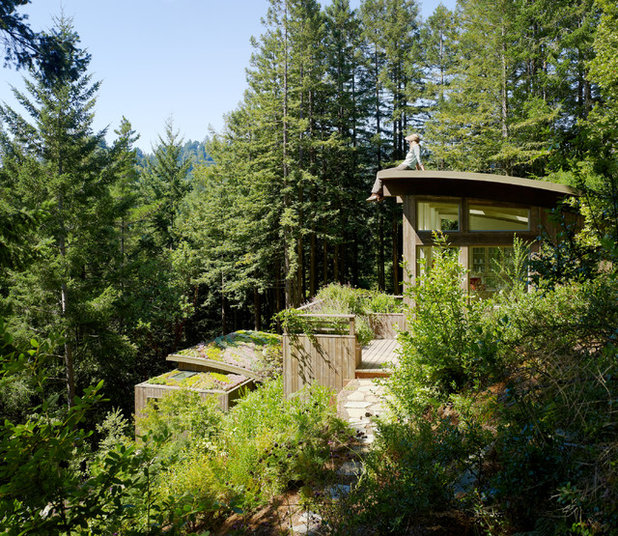
Feldman Architecture, Inc.
Harmony with the setting. This green roof blends perfectly with the extended view and makes the cabin look less obtrusive in the landscape. A vegetated roof is less disruptive of local habitat than a typical roof.
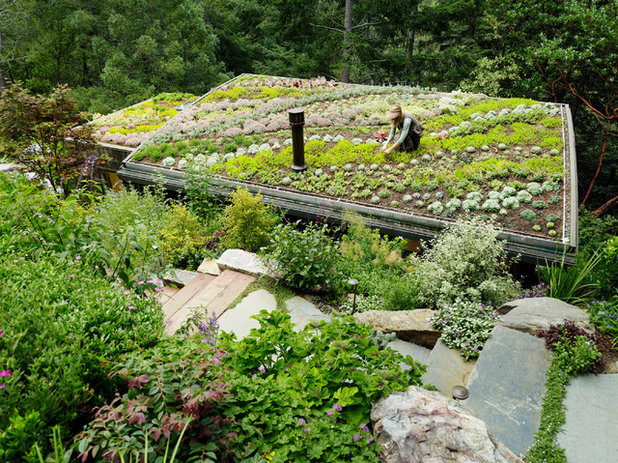
Feldman Architecture, Inc.
Typical extensive green roof. Note the multiple components of the roofing system. The slower rate of runoff from a living roof allows more stormwater to percolate into the surrounding soil. A typical roof sheds water at high speed, increasing likelihood surface erosion.
See more of this hillside property
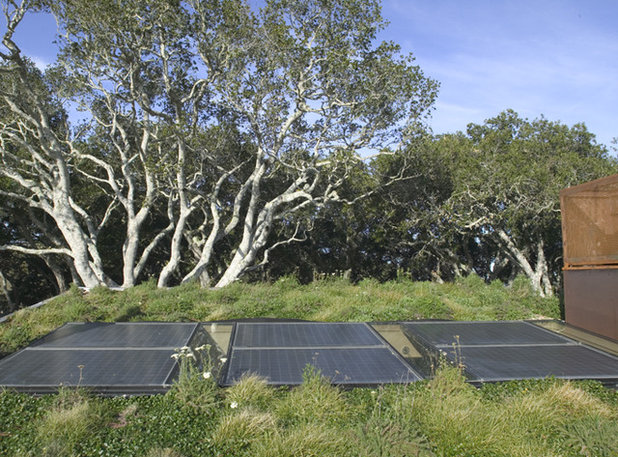
Fulcrum Structural Engineering
Double-duty green roof. Integrate some solar panels, and your roof becomes twice as productive and beneficial while keeping your home comfortable, dry and snug.
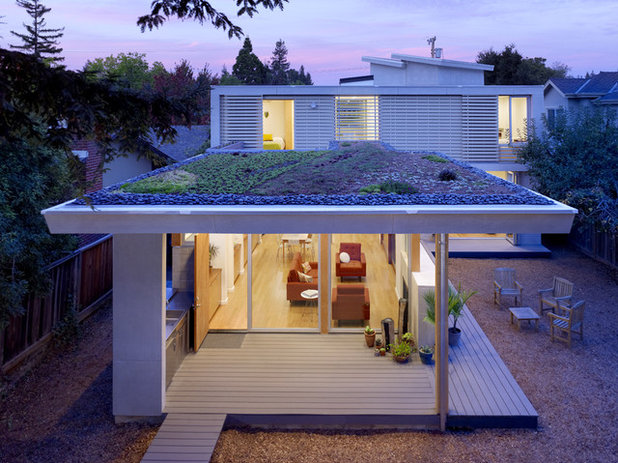
Feldman Architecture, Inc.
Drought-tolerant succulents. Succulents are well suited for vegetating an extensive (shallow soil) living roof. High water-use, low water-demand plants, most succulents can take the punishing heat, blistering sun and shallow soils of the rooftop environment — often with no permanent irrigation and nearly no maintenance.
Note the pattern of the plantings and the band of pebbles around the perimeter of this roof. The pebbles enhance the composition and trap any soil kicked up by driving rain, keeping the soil on the roof where it belongs.
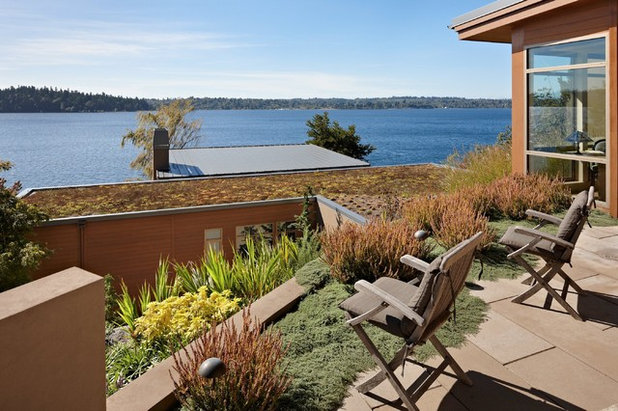
McClellan Architects
Extensive and intensive roofs on the same project. The extensive green roof in the middle ground of this photo has shallow soil and shallow-rooted plants. The rooftop garden in the foreground is comprised of pavers laid over a suspended infrastructure with intensive green roof borders.
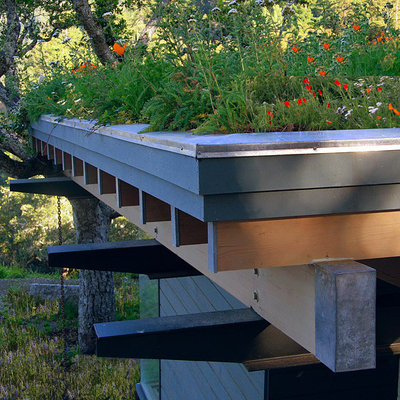
Feldman Architecture, Inc.
California natives. A mix of California poppies (
Eschscholzia californica), yarrow (
Achillea mellifolium) and other natives makes this intensive green roof right at home in this California garden.
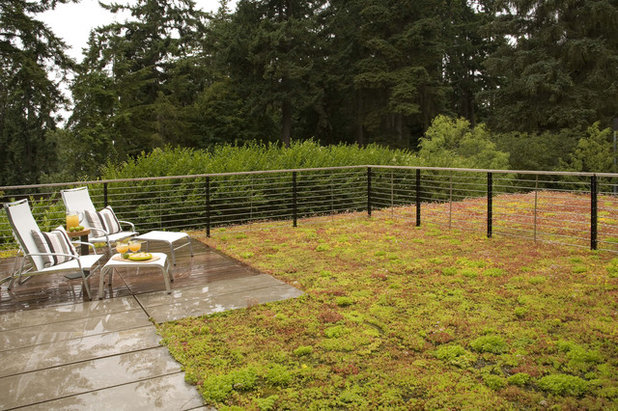
Coates Design Architects Seattle
Prevegetated mats. Consider prevegetated mats for your green roof project. Modular units of substrate plus rooted plants simplify installation once the proper structure and waterproofing are in place. A carpet of mixed stonecrop (
Sedum) varieties creates a low-muss, low-fuss green roof.
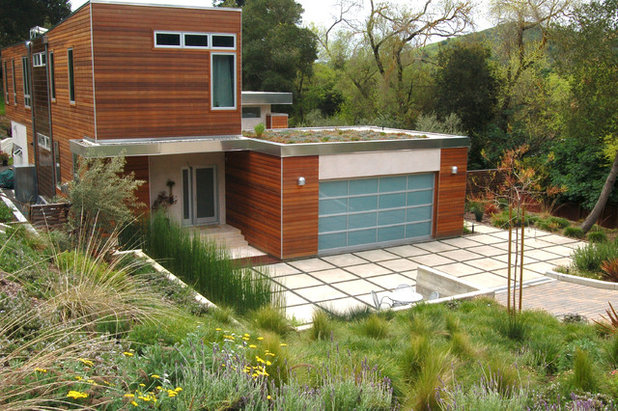
Huettl Landscape Architecture
Enriched composition. This green roof provides all of the environmental benefits of a living roof
and complements the strong lines of this home's modern architecture.
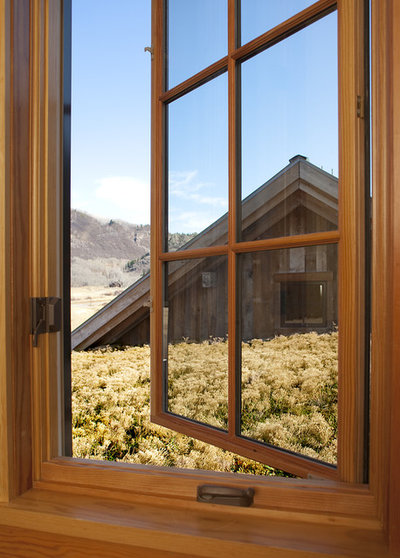
Robert Hawkins
Habitat and a borrowed view. What might have been an unfortunate view of a hot, glaring roof is now a charming vignette. The plant palette on this living roof ties the house to the distant mountains and brings seed-eating birds to eye level.
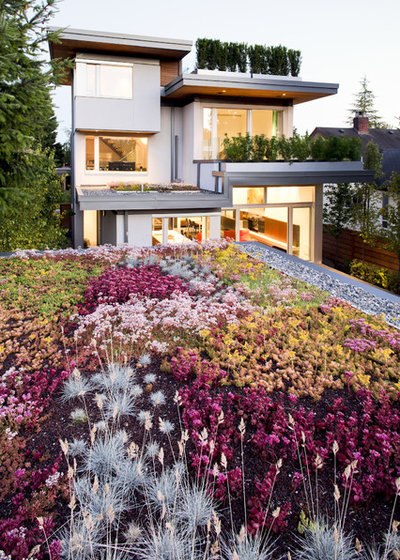
Natural Balance Home Builders
Rooftop tapestry. Colorful stonecrop varieties contrast with a white-leaf fescue on this colorful green roof.
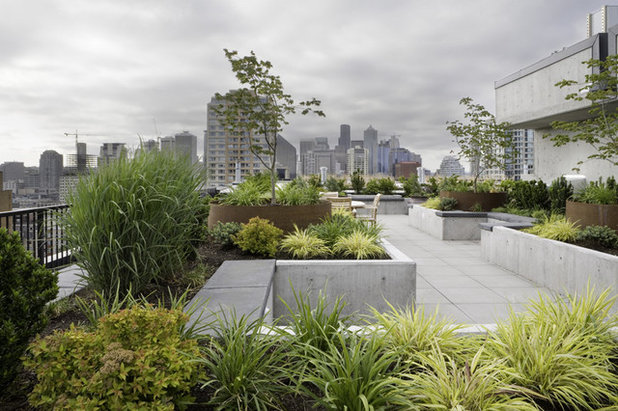
Kenneth Philp Landscape Architects
Garden in the sky. This rooftop garden shows another approach to creating garden space in the domain usually dominated by air conditioners and other mechanical components. The building has to be designed from the ground up to accomodate the weight of the garden and manage stormwater. Tough, year-round plants in 18-inch-high planters require little maintenance. Planter walls provide seating; pavers set over a suspended infrastructure and a killer view make this space popular with building tenants.
More:So Your Style Is: Green
Easy Green: 10 Ways Toward a Zero-Energy Home





